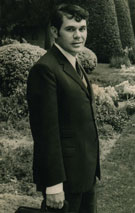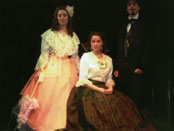Manuel Muñoz Hidalgo
Writer
www.manuelmunozhidalgo.com
About me
Manuel Muñoz Hidalgo is a versatile author that has cultivated biography and rehearsal to satisfy his interests even though his creativeness has been thrown into Poetry and Theatre. He is a prolific Author: Fourteen poetry books and forty Theatrical plays without counting the ones waiting in a drawer to be put to scene or be published. It is a considerable heritage that will make long-winded its study and catalogue. However you will allow me to mention some meaningful pieces in the trajectory of his theatrical production, necessary to understand the place the works published occupy.
Since Televisión Española in 1970 adapted El HERRERO DE BETSAIDA as a serial production, he got his self clear of what scenic production should be. For him, Theatre mustn't avoid reality with evanescent symbols and doubtful connotations, which does not mean it does not assume a determined sense of truth.
STUDIES
Humanities and Philosophy.
Seminars of San miguel of Orihela, San josé and San Fulgencio of Murcia. (from 1949 to 1957)
Secondary Education Studies of philosophy and arts at the university of Murcia, Mine Engineer at the school of Cartagena.
Professional improvement of professor about active teaching. Murcia 1970.
Planification and Cordination of Programs, Image, Sound at the Official School of Radio Broadcast and Television of Madrid (1973) for Foreign.
Child and youth Theatre at the Disntance Learning National university of Education of Madrid 1994, Among other numerous seminars and workshops.
ABOUT ME

Theater is a form of expression that recreates platonic shadows of the world in which realism gives a greater incisiveness into social's fabric. The ideas, human outlines, environmental pressure, imagination projections or the set of the suppositions, provide dramatic tension that determines the structure of the plays. This realistic power of theatre does not involve a vision of the means, a vision that inhibits the form of expression. Topics and theatrical modalities give birth to new forms and sometimes they approach to experimentation.
Globaly observing, I perceive four main groups in Muñoz Hidalgos theatre, that sometimes interfere between one another and sometimes determine his technical achievement.
There is a first group of theatre for children to which he is also theorical. He understands theatrical praxis as a fundamental pillar in children and youth education. He began this group with LAS COSAS DE MARIANICA or LA CASA DE COLASA, in theater collections for children. Other pieces appeared as appendices of his theoretical practical theater course books: FANTASÍA DE CARTÓN or A BELÉN, BELÉN!
A second group dedicated to religious Theatre, shows a wide spectrum. Great part of his plays have been conceived around the two traditional aspects of Birth and Passion: CÁNTIGAS AL NACIMIENTO DE NUESTRO SEÑOR JESUCRISTO, MOMOS EN LA NOCHEBUENA, EL HERRERO DE BETSAIDA, CANTIGAS A LA PASIÓN DE NUESTRO SEÑOR JESUCRISTO, CORONA DE PASIÓN (which he designates as self-sacramental) and a special section for BIEN DE ALMAS (Forbidden Love) drama which we will get on further.

A third group of historical Theater, based mostly on acclaimed personalities of History and Arts, which allow to get into different historical periods. Some issues that are still valid are this way explained, although seen with the perspective that time has given to us: LA PASIÓN Y LA GLORIA, about FRANCISCO SALZILLO; LA PALABRA Y EL MURO about Francisco de Quevedo; EL SABER Y LA RENUNCIA, about CIRILO Y METODIO (in verse play); EL DÍA Y LA BRUMA, about Gustavo Adolfo Béquer; EL TORNILLO (LA CONDENA Y EL VUELO), about Miguel Hernández ... And others like EL MESÓN DE PAREDES, in which the real main character is the Madrid of the XVIIth century.
The forth group is a compound of human dramas such as CUADRÍCULA (DOCK BACKGROUND), the fast strokes of brush of PICTODRAMAS CON ARTÍCULO or LA ESTACIÓN DE NADIE, to which we will need to add an experimental drama like VERSO BLANCO (The city and the steps).

If we accept this classification of Muñoz Hidalgo theatrical production, EL TEMBLOR DE LA LLAMA and BIEN DE ALMAS (FORBIDDEN LOVE), the two plays here published, have a differentiated position. The first one belongs to historical theatre, since the main character, the Princess of éboli obtained her fame for the role she played in politics during King's Felipe II Kingdom. On the other hand, BIEN DE ALMAS, which we have classified as religious theatre, could be included also in the forth group, as it is a human drama which goes into the depths of the interpersonal relations.
José García Templado

